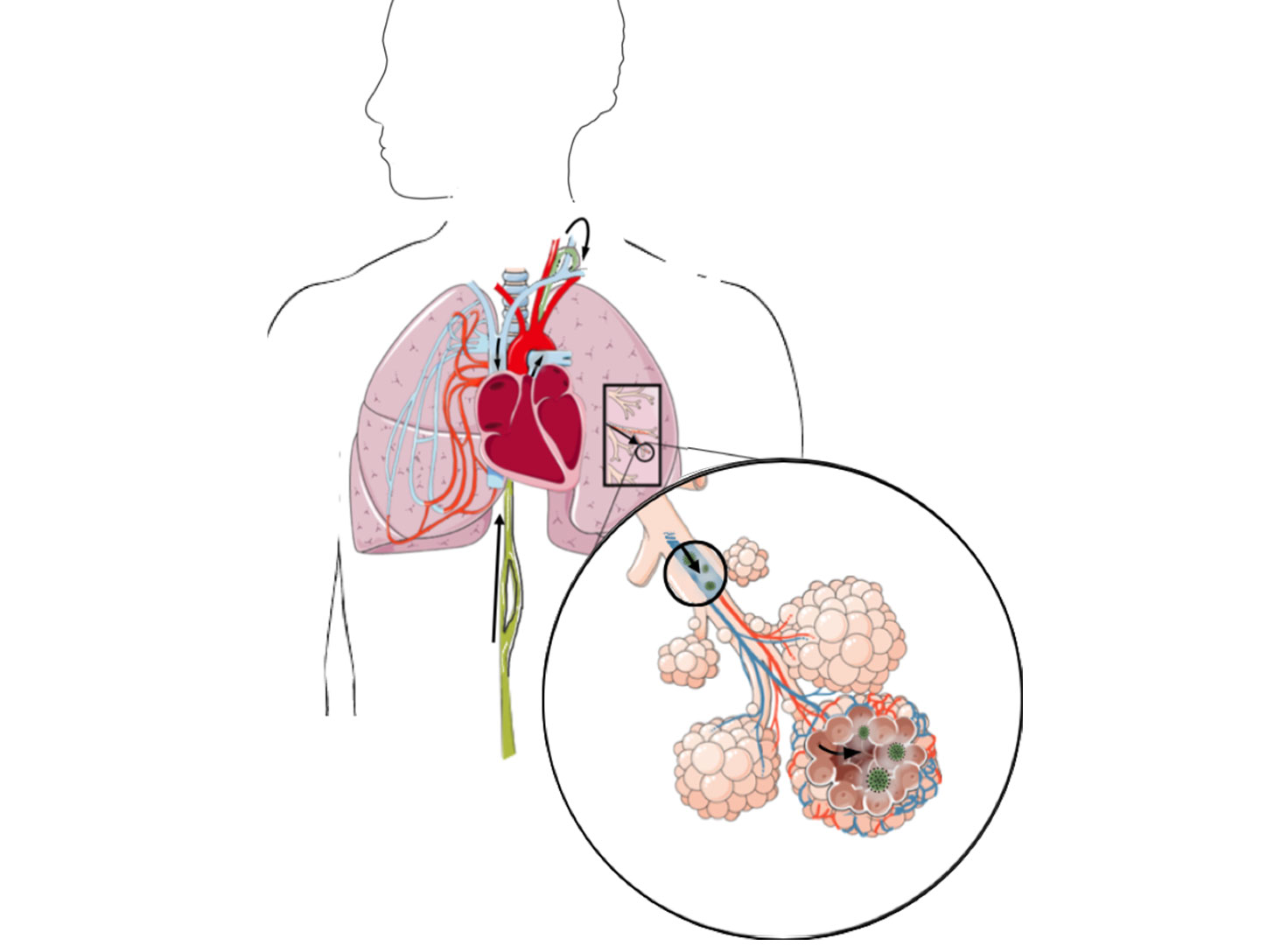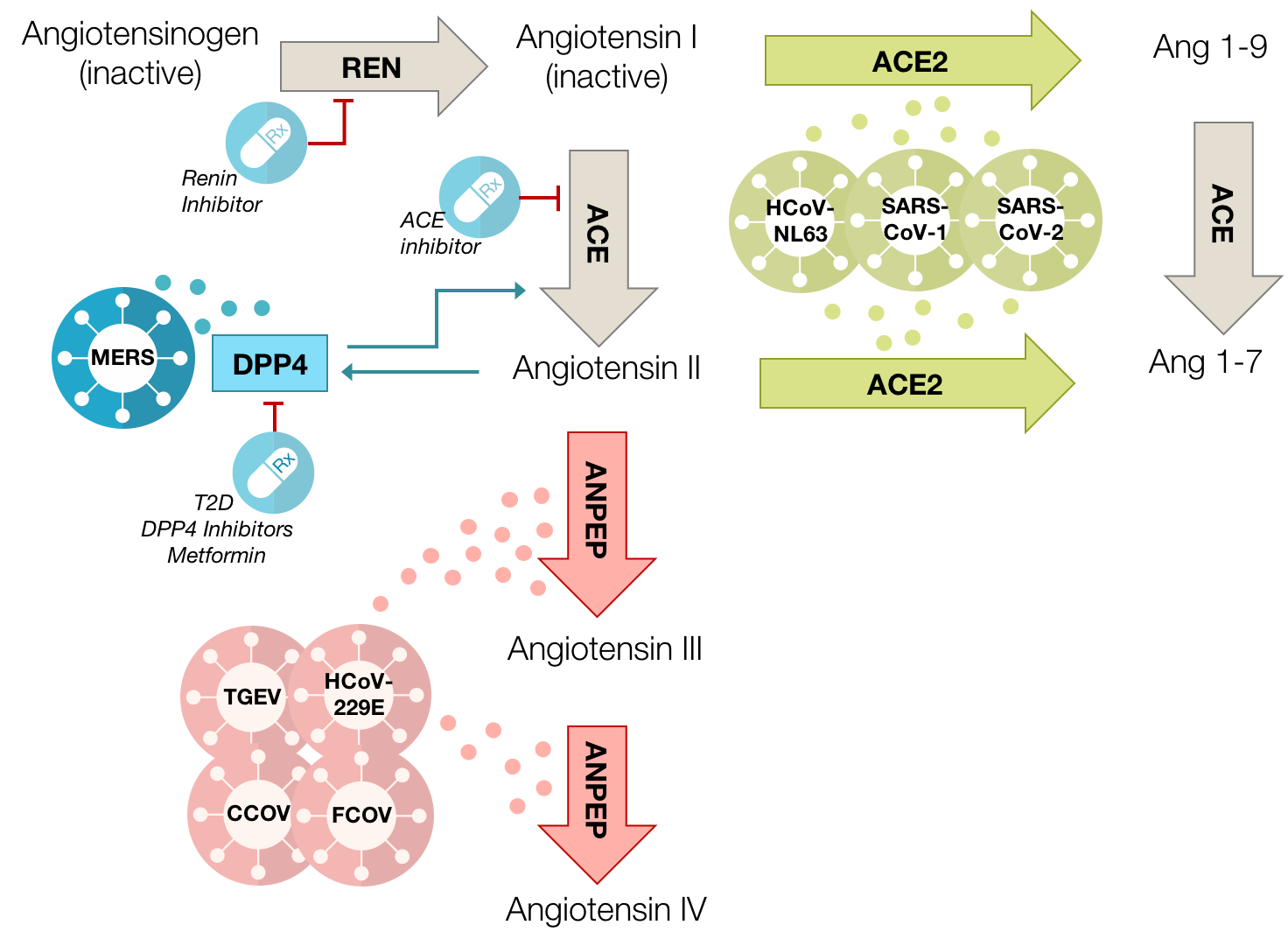The Host – Mechanism of Infection
Differentially expressed genes in COVID-19 bronchoalveolar lavage
SARS-CoV-2 actively destroys macrophages and dendritic cells or reprograms them to the point of being unrecognizable. The COVID-19-overexpressed clusters are highly enriched for genes that define lung structural cell types including epithelial type I, type II, and lymphatic endothelial cells. There is also increased expression for genes related to intercellular or extracellular adhesion compared to controls, as well as additional genes in those categories not normally expressed in those cell types. The ACE2-correlated differentially expressed genes define macrophage and dendritic cells, which are uniformly absent in the COVID-19 samples
Differentially expressed genes in COVID-19 bronchoalveolar lavage
Several components of RAS are upregulated in bronchoalveolar lavage (BAL) samples taken from COVID-19 patients (ACE2, AGT, MAS, and REN). In order to gain a broader understanding of SARS-CoV-2 infection, we carried out a transcriptome-wide analysis of these samples and identified 2,057 significantly downregulated and 591 upregulated genes.
Oak Ridge National Laboratory is managed by UT-Battelle LLC for the US Department of Energy



